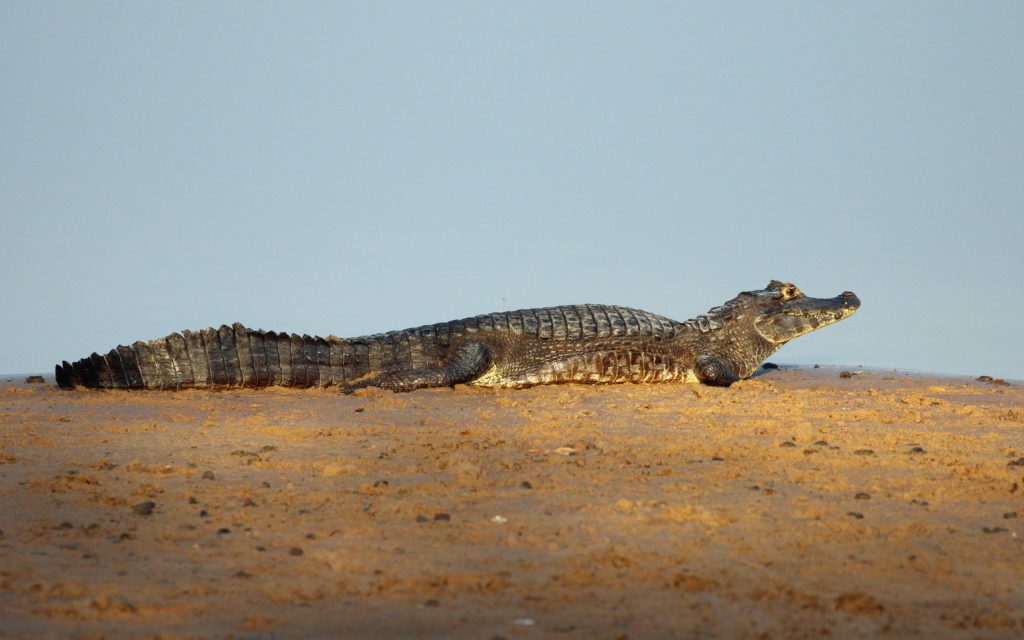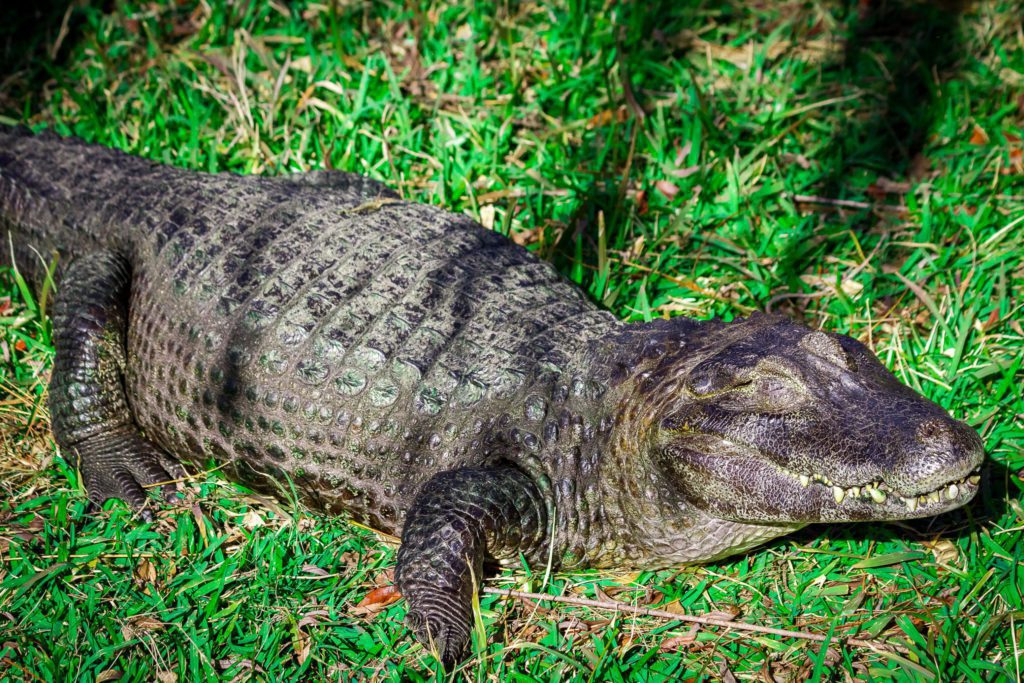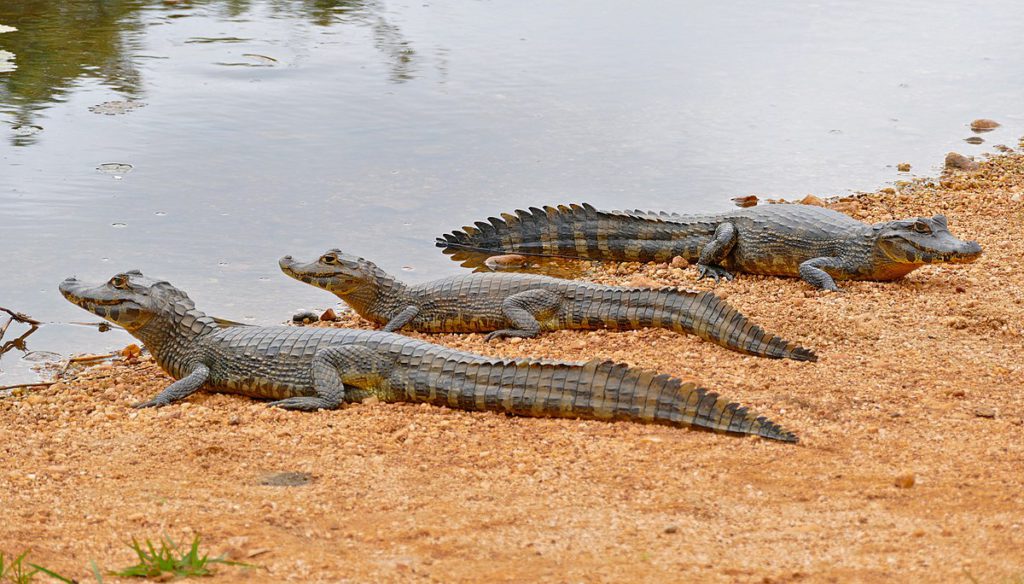The Paraguayan Cayman (Caiman yacare), or the Yakara caiman – one of the most interesting members of the alligator family. It is also called yakare - the word comes from the Guarani language and means "crocodile".
This reptile is an integral part of the South American ecosystem, found in the swamps, rivers, and lakes of Brazil, Paraguay, Argentina, and Bolivia. Thanks to adaptations to different environmental conditionsit survived mass hunting in the 20th century, and its numbers in the wild remain stable.
I wonder what this caiman has more peaceful characterthan its formidable relatives, and is more common in groups. In this article, we will look at features of its life, behavior, habitat, nutrition and threats.

Scientific classification
🔬 Taxonomy of the Paraguayan Caiman:
✔ The Kingdom: Animals (Animalia)
✔ Type: Chordal (Chordata)
✔ Class: Reptiles (Reptilia)
✔ Row: Crocodile-like (Crocodylia)
✔ Family: To the alligator (Alligatoridae)
✔ Gender: The Caimans (Caiman)
✔ View: The Paraguayan Cayman (Caiman yacare)
📌 Interesting!
This view It is a close relative of the broad-faced Caiman (Caiman latirostris). and it is often found together with it in nature.
Origin and history of the discovery
🕵 Who discovered the Paraguayan Caiman?
* First described it Georges Cuvier in the 1800s, but only in the XX century it became the object of detailed study.
* The species has been under threat for a long time through hunting for valuable leather.
• In the 1990s, the population began to recover, and now it is common again in the wild.
📌 Interesting!
In the past, this view it was considered a subspecies of the broad-faced caimanbut modern research has proven that it is separate independent view.
Appearance and features
💠 What does the Paraguayan Caiman look like?
• Size: On average 1.5-2.5 meters, the largest individuals reach 3 meters.
• Weight: 30-60 kg, the largest-k 80 kg.
• Color scheme: From from dark green to brown, with black spots on the body.
• Chairman: Elongated, relatively narrow, with black markings around the eyes.
• Jaws: Long and thin, with 74-80 teeth, which allows you to catch fish.
📌 How is it different from other Caimans?
✅ Longer muzzlethan the broad-faced Caiman.
✅ Has smaller sizesthan the black caiman (Melanosuchus niger).
✅ Likes to live in groupsunlike most other crocodilians.

Range and habitat
🌍 Where does the Paraguayan Caiman live?
Its range covers rivers, swamps, and wetlands of South America, separately:
• Brazil (Pantanal, Amazonia, Mato Grosso)
• Paraguay
• Argentina (Chaco, Formosa provinces)
• Bolivia
📌 Interesting!
It can live as in fresh water, and for slightly brackish lagoons.

Lifestyle and behavior
🔹 Activity and behavior
* Leads semi-aquatic lifestyle, often basks in the sun.
• Less aggressivethan the black caiman.
* Likes live in groupswhich is rare among crocodiles.
🔹 Hunting and nutrition
• Main meal:
✅ Fish
Amphibians (frogs, salamanders)
✅ Small mammals and birds
✅ Reptiles (snakes, turtles)
📌 Interesting!
Its narrow muzzle is adapted for fish huntingbut it can also feed on ground prey.
Reproduction and development
💡 How does the Paraguayan Caiman breed?
* Females lay eggs 20-35 eggs into a nest of vegetation.
* Incubation continues 75-90 days.
* Nest temperature affects the sex of the cubs:
✅ Higher temperature – males
✅ Lower temperature – females
📌 Interesting!
Females they take care of the cubs for several months, which is not typical for many other crocodiles.

Threats to the species and their protected status
⚠ What threatens the Paraguayan Cayman?
• Poaching - in the XX century, they were caught en masse for the sake of leather.
• Habitat destruction - deforestation, drainage of swamps.
• Climate change - Reduction of water resources in the Pantanal region.
🛡 Security status:
, Entered in IUCN Red List how "Least Risk" (LC).
✅ Save programs include hunting control and habitat protection.
📌 Interesting!
Now in the wild it is home to more than 5 million individualswhich makes it one of the most numerous Caimans.
Conservation efforts for the species
✅ Breeding in nature reserves.
✅ Prohibition of illegal fishing in most countries of its range.
✅ Ecotourism programscontributing to the conservation of the species.
📌 Interesting!
Unlike many other crocodiles, this species it is not under threat of extinction thanks to a stable population!
Conclusion
The Paraguayan Cayman – an amazing representative of alligatorsadapted to various environmental conditions and survived after active hunting in the XX century.
💡 Basic facts:
✔ It has a peaceful character and medium size
✔ Common in South America
✔ Likes to live in groups
✔ The population is stable, thanks to environmental measures
📢 This unique caiman is a prime example of successful conservation in the wild!